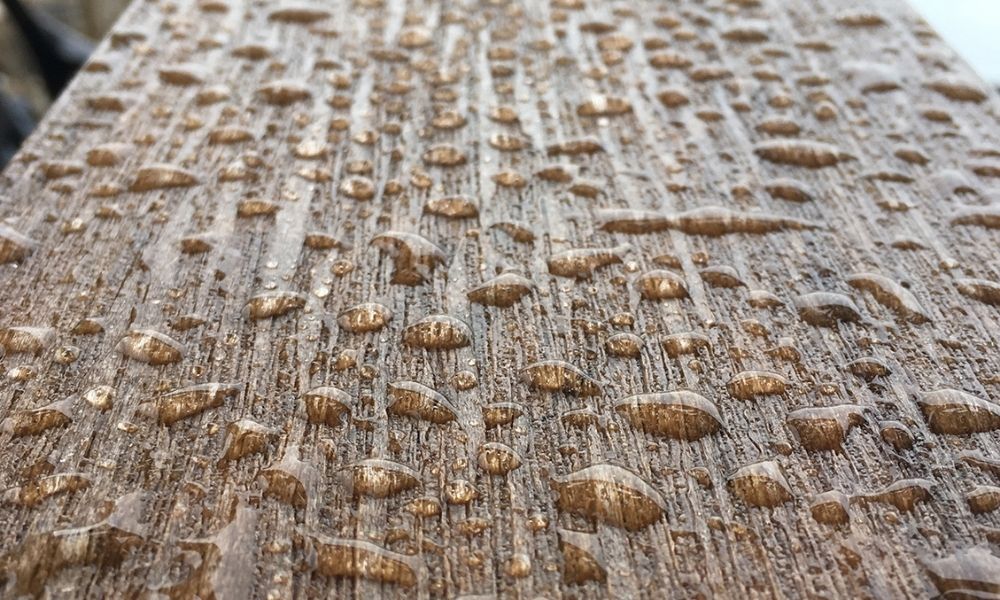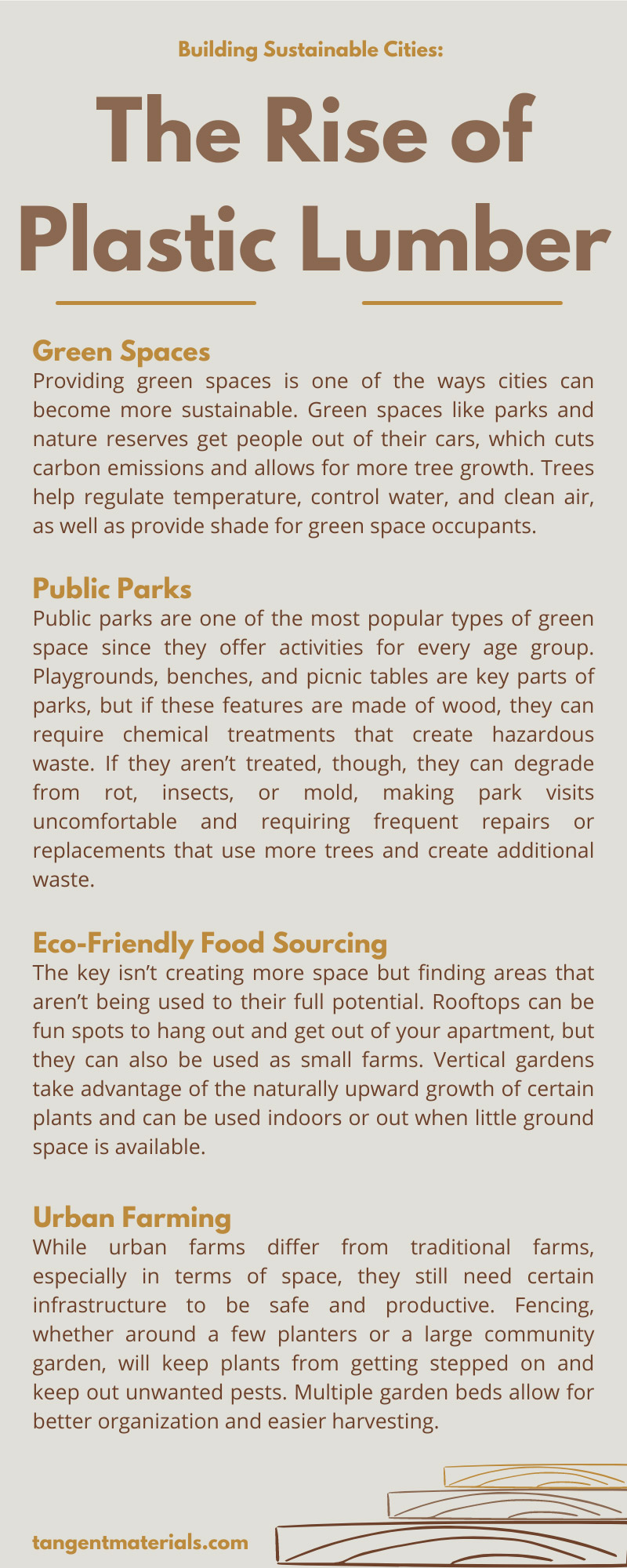Building Sustainable Cities: The Rise of Plastic Lumber

Sustainable cities are a new way to build sustainability into projects. With so many occupants, cities easily contribute to large amounts of air pollution and food waste. But since cities continue to remain popular due to their social and economic options, the choice is not whether cities should exist, but how they can be re-thought and re-planned in order to have a positive rather than negative effect on the environment.
There are several key factors that help cities be more sustainable. Providing green spaces, creating food sourcing options, and having public transit are three big ways that cities can be more eco-friendly. When constructing these sustainable factors, materials can be chosen that will further enhance the green goal of the projects. Plastic lumber is one such material, since it’s made of recycled materials and can easily replace traditional wood in both aesthetics and utility. The rise of plastic lumber in building sustainable cities is a step into an eco-friendlier future.
Green Spaces
Providing green spaces is one of the ways cities can become more sustainable. Green spaces like parks and nature reserves get people out of their cars, which cuts carbon emissions and allows for more tree growth. Trees help regulate temperature, control water, and clean air, as well as provide shade for green space occupants. Green spaces in general, but specifically ones with trees, support diverse ecosystems as well, since birds can safely nest, and butterflies can lay their eggs on the available leaves.
But animals aren’t the only ones benefitting from biodiversity. Diverse green spaces can help mental and immune health in humans, as well as contribute to better social cohesion and decreased crime rates. Getting outside is good for everyone.
Public Parks
Public parks are one of the most popular types of green space since they offer activities for every age group. Playgrounds, benches, and picnic tables are key parts of parks, but if these features are made of wood, they can require chemical treatments that create hazardous waste. If they aren’t treated, though, they can degrade from rot, insects, or mold, making park visits uncomfortable and requiring frequent repairs or replacements that use more trees and create additional waste.
Plastic lumber has become a popular solution to this problem. For instance, a plastic retaining wall can be a more effective solution than a traditional wooden fence. Not only is it made of recycled materials, but it also requires nothing more than soap and water to keep clean. Plastic lumber is the most sustainable solution to city parks as it is more durable than wood in a variety of weather conditions and requires less maintenance.
Eco-Friendly Food Sourcing
Food is the second most in-demand resource in cities after energy, but the environmental effect of food transportation and waste is far from sustainable. By using space within cities for urban farming, the distance between producer and consumer is shortened. But where can bustling cities possibly find the space for a farm?
The key isn’t creating more space but finding areas that aren’t being used to their full potential. Rooftops can be fun spots to hang out and get out of your apartment, but they can also be used as small farms. Vertical gardens take advantage of the naturally upward growth of certain plants and can be used indoors or out when little ground space is available. Community lots can make space for a community garden with just a few planters, and schools and restaurants can implement any of these ideas to better sustain their consumers.
Urban Farming
While urban farms differ from traditional farms, especially in terms of space, they still need certain infrastructure to be safe and productive. Fencing, whether around a few planters or a large community garden, will keep plants from getting stepped on and keep out unwanted pests. Multiple garden beds allow for better organization and easier harvesting.
Building this infrastructure with sustainable materials will help contribute to the eco-friendly nature of the urban farm. Plastic lumber can be used for both, since it’s weatherproofed and durable, and it has the added bonus of being made from recycled materials. The longevity of plastic lumber will save farmers on maintenance and give them peace of mind knowing that the fence and garden beds won’t splinter or break.
Public Transportation Options
One of the hallmarks of a sustainable city is having good public transportation options. Buses and train systems help cut down on carbon emissions since more people can be transported at the same time without the need for individual cars. Biking and walking should also be safe options, so cities that want to be sustainable should invest in sidewalks and bike lanes.
Cutting down on carbon emissions isn’t the only benefit for public transit. Being able to easily get around without a car decreases street congestion and improves the health and wellness of city inhabitants. The decrease in CO pollution means better air quality as well.
Construction Choices
When building new public transit options, city planners and architects can make eco-friendly construction choices. Recent research has proved that plastic lumber is an option for railway ties, replacing wooden ties that require chemical treatments that harm the environment. Outdoor furniture at train, bus, or rideshare stations can also be built from plastic lumber that is sturdy and durable. Providing a safe, comfortable place to sit will make public transit stops more attractive.
Plastic lumber is aesthetically pleasing, since it looks like traditional wood. It also comes in a variety of colors that have built-in UV protection, so they won’t fade. Gone are the days of faded splintered wood benches that push people away from transit stops.
With the rise of plastic lumber, building sustainable cities becomes more attainable. While many have a long way to go before they can be considered eco-friendly, choosing to make changes like adding green space, constructing urban farms, and providing public transit will help them towards that goal. Even small choices like choosing a plastic lumber fence over a wooden one can have a positive environmental impact. No matter where we live, we owe it to the planet we call home to make choices that take better care of the environment.













